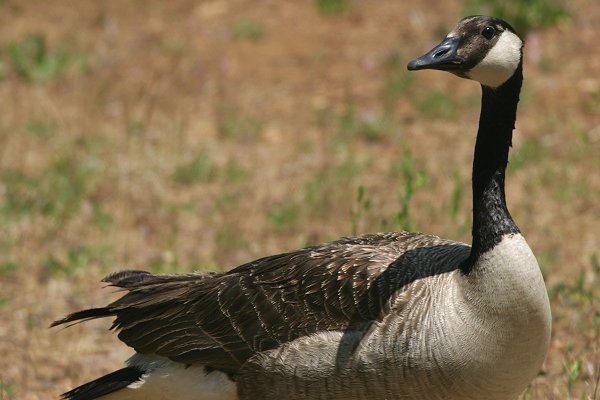
Date: 2003-05-31
Lens: Canon 400mm F5.6

 Canada Goose
Branta canadensis
Canada Goose
Branta canadensis
 Description
DescriptionOften associated with a change in season, these birds can be seen migrating overhead in an irregular "V" formation. Few species of North American birds are as widely distributed and comprise as many subpopulations as the Canada Goose. With more than 40 subpopulations, the birds vary in size (the smallest being 1/4 the size of the largest), sound (the larger birds make a deep honking sound, wherease the smallest make a high-pitched cackling sound) and body color (all populations have the white chinstrap and cheek patch, black head and neck). These birds mainly feed on plants.
Black head and long black neck with a white chinstrap patch that extends up to its cheek. Brown back, upper wings and flanks. White or dull brown breast. White belly and undertail coverts. Short black tail with white upper tail coverts. Sexes similar. Sepcies can vary in size from region to region. 16 to 45 inches in length.
Lakes, bays, rivers, marshes, mudflats and fields. Often feeds in open grasslands and fields.
 Nesting
Nesting4-8 whitish eggs with a 25-30 day incubation period. Fledging occurs in 40-73 days. The nest is large mass of grass and moss lined with down. It is usually built on the ground near water.